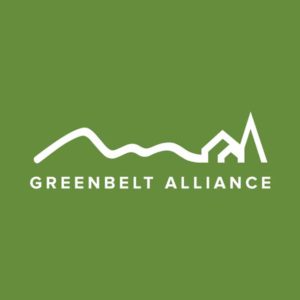New initiative challenges Bay Area leaders to reach more vibrant, sustainable future
Greenbelt Alliance, a regional leader in growth and development issues, unveiled its Grow Smart Bay Area initiative today in San Francisco. The initiative lays out a vision, backed by intensive research, for how Bay Area cities and towns can accommodate a growing population with compact development in existing neighborhoods, to create more vibrant, sustainable communities.
By 2035, nearly two million more people are projected to live in the Bay Area. Greenbelt Alliance says that can be a good thing.
“Today, we’re looking at growth and development as an opportunity: we can use it to invest in our neighborhoods and make them even better places to live, while protecting the farms, forests, and watersheds we depend on,” said Greenbelt Alliance Executive Director Jeremy Madsen. “We can do it. The question is, ‘Will we?”
Madsen called for stronger policies and focused funding to encourage city-centered development, and encourage residents to speak up for good development in their neighborhoods.
Madsen, who spoke before an iconic Bay Area view of hills, cities, and water at San Francisco’s Carnelian Room, was joined at the event by scores of Bay Area leaders, from elected officials to housing advocates to developers and business leaders.
“Grow Smart Bay Area offers a path to prosperity,” said Jim Wunderman, president and CEO of the Bay Area Council, a business-backed Bay Area public policy organization. “Metropolitan regions will have to compete in this new economy. By building homes close to jobs and protecting the natural beauty of this place, the Bay Area can position itself to win.”
Grow Smart Bay Area shows how new development in existing neighborhoods can accommodate new residents, while creating more housing choices.
Benefits of compact development include safe, walkable neighborhoods near parks and schools, transportation options, and nearby conveniences like shops and restaurants.
Greenbelt Alliance’s analysis, audited by Strategic Economics, envisions what could happen if more than 40,000 places around the region, from boarded-up strip malls to parking lots, are rebuilt in a way that realizes community visions. Researchers added up the homes and jobs envisioned for each of these sites, and combined these with forthcoming estimates from the Association of Bay Area Governments for potential growth in “priority development areas” that cities have identified around the region.
The result, Madsen said, is plenty of room for the nearly two million people and 1.7 million jobs the region is projected to add in the next 25 years. From an environmental perspective, that’s good news: no need to pave over farmland and hills, and fewer cars on the road.
It’s also good news for consumers.
“There’s a lot of pent-up demand for in-town living, and national demographic trends make it clear that’s going to increase,” said developer Will Fleissig with Communitas Development. “In this housing market, the homes that have hung onto their value are those in more central locations. When the market starts coming back, the smart money will be on infill development.”
Homebuyers and renters can save a lot over the long term, too, said Fleissig. Gas prices have fallen over the last year but are likely to go up again, and a short commute can pay big dividends. In addition, less driving saves time.
According to San Jose Mayor Chuck Reed, “San Jose is living proof that smart growth policies can start a citywide renaissance. We encourage our fellow Bay Area cities to commit today to creating walkable neighborhoods, so people can spend less time in traffic and more time with their families.”
Mary Nichols, chairman of the California Air Resources Board, gave the closing address at the event. Nichols said that developing livable and walkable communities is an integral part of the state’s efforts to address climate change. SB 375, the state’s pioneering law that sets regional greenhouse gas targets for metropolitan areas, will help reduce our dependence on cars and trucks, the largest source of global warming pollution in the state. By promoting smart growth and infill development and encouraging land use that offers alternatives to driving, Nichols said Grow Smart Bay Area could be a model for the state and the nation.
Greenbelt Alliance also launched a website today as part of the Grow Smart Bay Area initiative; to learn more about the vision, download a brochure, and find out how to get involved, visit www.growsmartbayarea.org.





